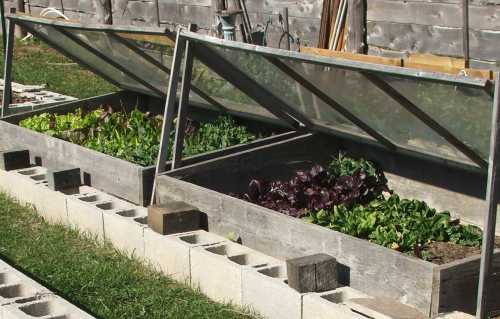by Pat Battle, Sparkling Earth Farm, & Director of Living Web Farms
At this point, however, the produce available in winter is not as diverse as it could be. I have grown a variety of produce for harvest in mid-November through early spring, including rutabagas, celery, leeks, baby white turnips, salad greens, kale, collard, pac choi, parsnips, carrots, spinach, broccoli raab, Swiss chard, cabbage and Chinese cabbage, various radicchios, broccoli, radishes and escarole.
For those considering winter gardening for the first time, salad and cooking greens are a great place to start. If you combine the protection of row cover and plastic, you will be sure to avoid heartbreaking losses.
Aside from greens, other rewarding winter crops include:
• Celery: When transplanted between late August and October with the size of the transplant increasing the later
sweet, juicy, and almost fiberless. Note that although 72 size cells would be a fine size to plant out in late August, by October you need to put three-inch cells out to ensure a good crop prior to the long warm days of mid-Spring, which will induce bolting. My favorite variety is Ventura.
• Rutabagas: When these vegetables are planted between mid-July and early August, they start becoming irresistible as the deeper cold moves in in late November. If you don’t think you have a market for rutabagas, try taking them to market with a George Foreman grill and offering samples of grilled rutabagas. You’ll have people purchasing several after tasting them!
• Turnips and Baby White Turnips: These should be succession sown, from early August through early September for purple top turnips, and from mid-August through early February for baby whites. Baby whites in particular lend themselves to very dense plantings and are especially productive. When winter-grown, there are salad-quality turnips that are particularly delectable at the ping-pong ball to small-peach size. If some of your later sowings bolt, you could harvest the flowering tops and use them or sell them for use as a broccoli raab type green. Of course, if none of your turnips bolt, you could always grow successions of broccoli raab.
• Chicories: The chicories are particularly well served by the winter cold. Without the stress of heat, their perfect balance of bitter and sweet provide a depth of flavor that rivals broccoli rabe. And, nothing goes better with special fruit and salad than winter-grown chicories.
• Oriental Vegetables: I love all the oriental vegetables grown at this time a year, but I’ve been deighted by the beauty and quality of Purple Pac Choi.
• Brussels Sprouts: No discussion of winter vegetables would be complete without Brussels sprouts. Although they are widely represented as a crop that can be sown in late summer or early fall, the yield is pathetic when treated this way. Yet those who know the pleasures of well grown Brussels sprouts harvested after plenty of deep cold speak about them with longing. Brussels sprouts are best if grown over a long season from late spring into your area’s season of deep cold. If harvested by the stalk and stored this way, they have a very long shelf life with little loss of quality.
Season Extension Systems

Cold frames are Pat’s choice for easy, make-shift season extension.
I must confess that some of the season extension systems I’ve used or observed are very labor intensive. Fortunately, a modest investment in season-extension infrastructure would have made many of these systems more cost effective. Ultimately, my ideal winter growing strategy is to create cold frames designed to shed snow load and withstand the rigors of winter windstorms. Intensive production inside such cold frames can be very productive and much less labor-intensive.
Sometimes make-shift can be very efficient. I’ve used recycled greenhouse plastic combined with row cover to protect parsnips and rutabagas. This “system” uses no hoops, letting both the layers of cover rest directly on the crops. Here in Celo where winter often brings plenty of deep cold and snow, this basic protection allows the plants to survive the winter and produce spectacularly sweet root crops for early-season sales. It’s important to note that it was key that I simply left these two layers of protection on all winter, until March. Attempting to access these crops when the covers are heavily anchored, wet, and frozen would be dangerous.
Half-hardy and hardy plants have the ability to move water out of their cells as they sense increasing cold. If given enough time, these plants can move enough water out of their cells to ensure that their cells don’t rupture when they freeze. Once plants have the water out of their cells, when it freezes, the resultant ice functions sort of like an igloo and protects the cell. These tunnels, greenhouses, and all forms of “glazing” go a long way toward providing even half-hardy plants enough time to complete this water relocation process.
On very cold mornings, you will look at the likes of lettuces in your greenhouse and they will all be popsicles, frozen solid! But if they get the chance to reverse this water relocation process as the sun warms your structure, they will thaw out and get right back to growing. It is mostly a question of time! Your other tool/insurance policy is floating row cover.If you pull floating row covers over your plants in the late afternoon, the added insulation serves to sufficiently lengthen the cool down process.
I think we all realize the positive effect our efforts to re-localize our food system has had on our communities, both economically and socially. Expanding our efforts into the winter months will only increase this impact, strengthening our sustainability.


